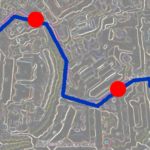We discuss the following topics in this blog:
- STL recognised as a ‘Visionary’ in Gartner’s prestigious Magic Quadrant (MQ).
- Gartner Magic Quadrant positions vendors in four categories.
- Sterlite Tech’s broad-based product portfolio.
In addition to these topics, we shall also be answering the following FAQs:
- What is WiFi?
- What is an Optical Fibre Cable?
Contents
Overview
Sterlite Tech has been recognised as a ‘Visionary’ in Gartner’s prestigious Magic Quadrant (MQ) for Integrated Revenue and Customer Management (IRCM) for Communication Service Providers (CSPs)* for the second consecutive year in 2017.
What are the Four Categories in Which Gartner Magic Quadrant Positions Vendors?
The Gartner Magic Quadrant positions vendors within a particular quadrant based on their ability to execute and completeness of vision by placing them in four categories:
• Leaders execute well against their current vision and are well-positioned for tomorrow
• Visionaries understand where the market is going or have a vision for changing market rules, but do not yet execute well
• Niche Players focus successfully on a small segment, or are unfocused and do not out-innovate or outperform others
• Challengers execute well today or may dominate a large segment, but do not demonstrate an understanding of market direction Gartner Magic Quadrant for IRCM for CSPs 2016.
Every year, Gartner evaluates 21 shortlisted Operations Support Systems (OSS)/Business Support Systems (BSS) vendors for its Magic Quadrant on completeness of vision and ability to execute. Sterlite Tech was a contender in this evaluation, as an integrated provider with a full-suite of IRCM solutions, including billing and account management, customer self-care, real-time rating/charging, policy management, customer/partner lifecycle management, multi-channel support, product catalogue, mediation, interconnect/wholesale billing, analytics and reporting among other functionalities.
What was STL recognised for?
Gartner’s recognition is for Sterlite Tech’s broad-based product portfolio, which incorporates all IRCM components for CSPs. Through continuous research, Sterlite Tech has developed solutions that are network agnostic and based on open standards. And, this recognition only cements our reputation as a global leader in building web-scale networks primed for the digital revolution.
FAQs
What is WiFi?
Put simply, WiFi is a technology that uses radio waves to create a wireless network through which devices like mobile phones, computers, printers, etc., connect to the internet. A wireless router is needed to establish a WiFi hotspot that people in its vicinity may use to access internet services. You’re sure to have encountered such a WiFi hotspot in houses, offices, restaurants, etc.
To get a little more technical, WiFi works by enabling a Wireless Local Area Network or WLAN that allows devices connected to it to exchange signals with the internet via a router. The frequencies of these signals are either 2.4 GHz or 5 GHz bandwidths. These frequencies are much higher than those transmitted to or by radios, mobile phones, and televisions since WiFi signals need to carry significantly higher amounts of data. The networking standards are variants of 802.11, of which there are several (802.11a, 802.11b, 801.11g, etc.).
What is an Optical Fibre Cable?
An optical fibre cable is a cable type that has a few to hundreds of optical fibres bundled together within a protective plastic coating. They help carry digital data in the form of light pulses across large distances at faster speeds. For this, they need to be installed or deployed either underground or aerially. Standalone fibres cannot be buried or hanged so fibres are bunched together as cables for the transmission of data.
This is done to protect the fibre from stress, moisture, temperature changes and other externalities. There are three main components of a optical fibre cable, core (It carries the light and is made of pure silicon dioxide (SiO2) with dopants such as germania, phosphorous pentoxide, or alumina to raise the refractive index; Typical glass cores range from as small as 3.7um up to 200um), Cladding (Cladding surrounds the core and has a lower refractive index than the core, it is also made from the same material as the core; 1% refractive index difference is maintained between the core and cladding; Two commonly used diameters are 125µm and 140µm) and Coating (Protective layer that absorbs shocks, physical damage and moisture; The outside diameter of the coating is typically either 250µm or 500µm; Commonly used material for coatings are acrylate,Silicone, carbon, and polyimide).
An optical fibre cable is made up of the following components: Optical fibres – ranging from one to many. Buffer tubes (with different settings), for protection and cushioning of the fibre. Water protection in the tubes – wet or dry. A central strength member (CSM) is the backbone of all cables. Armoured tapes for stranding to bunch the buffer tubes and strength members together. Sheathing or final covering to provide further protection.
The five main reasons that make this technology innovation disruptive are fast communication speed, infinite bandwidth & capacity, low interference, high tensile strength and secure communication. The major usescases of optical fibre cables include intenet connectivity, computer networking, surgery & dentistry, automotive industry, telephony, lighting & decorations, mechanical inspections, cable television, military applications and space.













